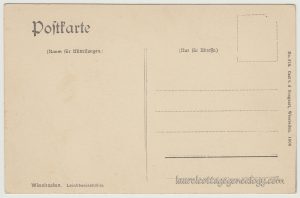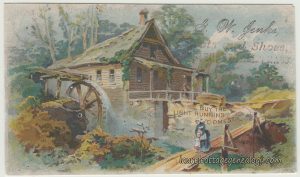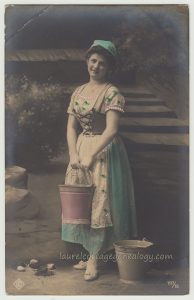Divided back, unused postcard. Series or number 81. Photographer or printer/publisher: L.L. Circa 1920.
Price: $7.00
Addressed to: “Mrs. Alex. Martin. Paris.”
“Dear Mrs. Martin, Many thanks for the lovely card and those you gave to Maman. The old women here are like this one. I will look for some others costumes for in Bretagne there are numerous. Best love from your very affectionate Jeannette.”
By coincidence, the prior post was also signed with “Best love.” Notable also is the unusual way that Jeannette writes the capital letters M and P. And this card had apparently come from another collection, before making its way to ours, as evidenced by the handwriting “638. Headdress of older time.” There’s another postcard site that also has a card of this same design right now, and that one has a particular date in 1920, hence the circa date for ours.
Last, but certainly not least, and without going into great detail, the beautiful woman from Pornic, Brittany, France, featured on this card is decidedly someone you would want to have a conversation with – kind and with a great sense of humor. Which brings up the question – who were the individuals that came to be featured as “types” from a certain area on the numerous cards that had circulated at one time? How did they come to have their photographs taken, and were they always paid for their time by the photographer? Looking into these questions might involve heavy research so we’ll not jump at this bait (tempting, though), but it would be nice to happen across the info at some time or another.
Source: Pornic. n.d. https://en.wikipedia.org/wiki/Pornic (accessed November 14, 2020).






















